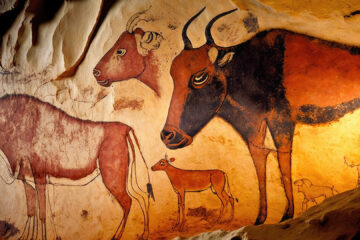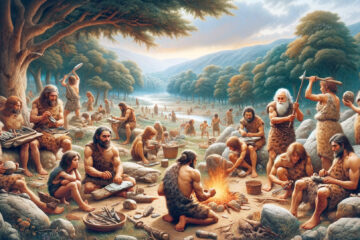
Timeless Legacies: Unveiling the Mysteries of the World’s Most Ancient Cultures
In this writing, we embark on a captivating journey through history to explore the rich tapestries of the world’s oldest civilisations. From the architectural marvels of Mesopotamia to the profound spiritual traditions of the Aboriginal Australians, these enduring cultures offer a window into humanity’s diverse heritage and illuminate the origins of complex societal structures and innovations. It highlights the continuous impact of these ancient societies on modern life, uncovering the secrets and stories of civilisations that laid the foundations of our world.
Unravelling the Enigma of Mesopotamia: The Cradle of Civilization
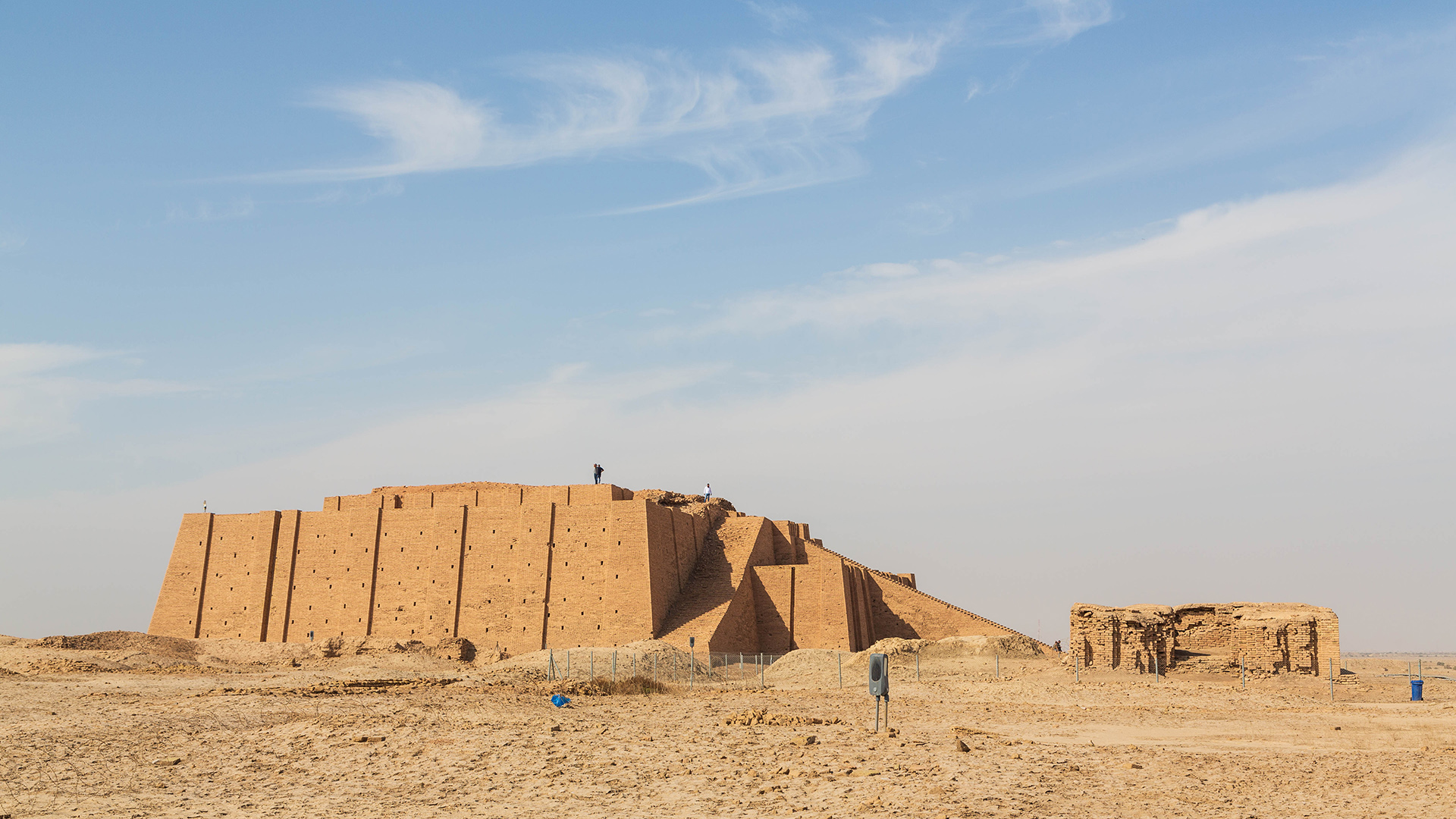
Ancient city of Ziggurat at Ur, Iraq. One of the notable archaeological sites of Mesopotamian civilization. Photo: © Afonin Gennadiy / Freepik
In the swath of fertile land between the Tigris and Euphrates rivers, the Mesopotamian civilisation often hailed as the cradle of civilisation, sprouted. This ancient culture, flourishing from around 4000 BCE, holds mysteries that intrigue scholars and historians alike.
Mesopotamia, now modern-day Iraq, was a mosaic of diverse city-states like Sumer, Akkad, Assyria, and Babylon. Each city-state boasted its ruler and deity, creating a rich tapestry of political and religious beliefs. The Sumerians, one of the earliest inhabitants, pioneered cuneiform writing, arguably the world’s first written language. This groundbreaking invention provided a window into Mesopotamian life, offering insights into their advanced legal systems, literature, and education.
One of the most enduring legacies of Mesopotamia is its contributions to law and governance. The Code of Hammurabi, inscribed on a diorite stele, is one of the world’s oldest deciphered writings of significant length. This ancient legal code offers an early example of the presumption of innocence and is a precursor to modern legal systems.
The Mesopotamians were also skilled astronomers and mathematicians. Their understanding of astronomy was so advanced that they could predict lunar eclipses and follow planetary movements. This knowledge significantly influenced their calendar and agricultural practices. Furthermore, based on the number 60, their mathematical systems laid the foundations for our 60-minute hour and 360-degree circle.
Despite their advancements, many aspects of Mesopotamian culture remain shrouded in mystery. For example, the reasons behind the sudden decline of the Sumerian civilisation are still debated, with theories ranging from environmental changes to military conquests. The Epic of Gilgamesh, a masterwork of ancient literature, also poses unanswered questions about Mesopotamian beliefs in the afterlife and the nature of gods.
Mesopotamia’s mysteries slowly unfold as modern technology unravels more secrets, offering glimpses into a civilisation that has profoundly shaped human history. From writing systems to legal codes, Mesopotamia’s legacy lives on, reminding us of our shared past and the timeless quest for understanding.
Deciphering the Paradox of Ancient Egypt: A Legacy Carved in Stone

Spectacular view of the Great Sphinx at the Giza Pyramid Complex, Egypt. Photo: © Alex Anton / Freepik
Ancient Egypt’s civilisation, which prospered along the fertile banks of the Nile River for over three millennia, continues to captivate with its enduring mysteries and monumental achievements. This civilisation, known for its iconic pyramids, mummies, and hieroglyphs, has left a legacy that has stood the test of time.
At the heart of Egyptian culture was a complex belief system centred around the afterlife. This belief manifested in the constructing the pyramids, especially the Great Pyramid of Giza, one of the Seven Wonders of the Ancient World. These great works of architecture, built as tombs for pharaohs, showcase the Egyptians’ advanced understanding of mathematics and engineering. Yet, how they constructed these colossal structures with such precision remains a subject of debate among historians and archaeologists.
The Egyptians were also pioneers in the field of medicine. Ancient papyri reveal sophisticated medical knowledge, including surgical procedures and natural remedies. The Edwin Smith Papyrus, for instance, offers insights into ancient surgical practices and has been lauded as a precursor to modern medical texts.
One must discuss Egyptian culture by mentioning hieroglyphs and their intricate writing system. The Rosetta Stone, a granodiorite stele inscribed with three versions of a decree, was instrumental in deciphering these mysterious symbols, unlocking vast records of Egyptian history and daily life.
However, much about ancient Egypt remains wrapped in mystery. Though partially understood, the purpose and rituals associated with mummification continue to intrigue. The exact religious beliefs and practices, particularly worshipping numerous deities, are still subjects of extensive research.
The ancient Egyptians left behind a rich cultural heritage in their quest to understand life and the hereafter. As modern technology aids in discoveries, the riddles of this ancient civilisation gradually unravel, revealing a society that was as complex as it was innovative.
Secrets of the Indus Valley Civilization: An Ancient Society Lost in Time
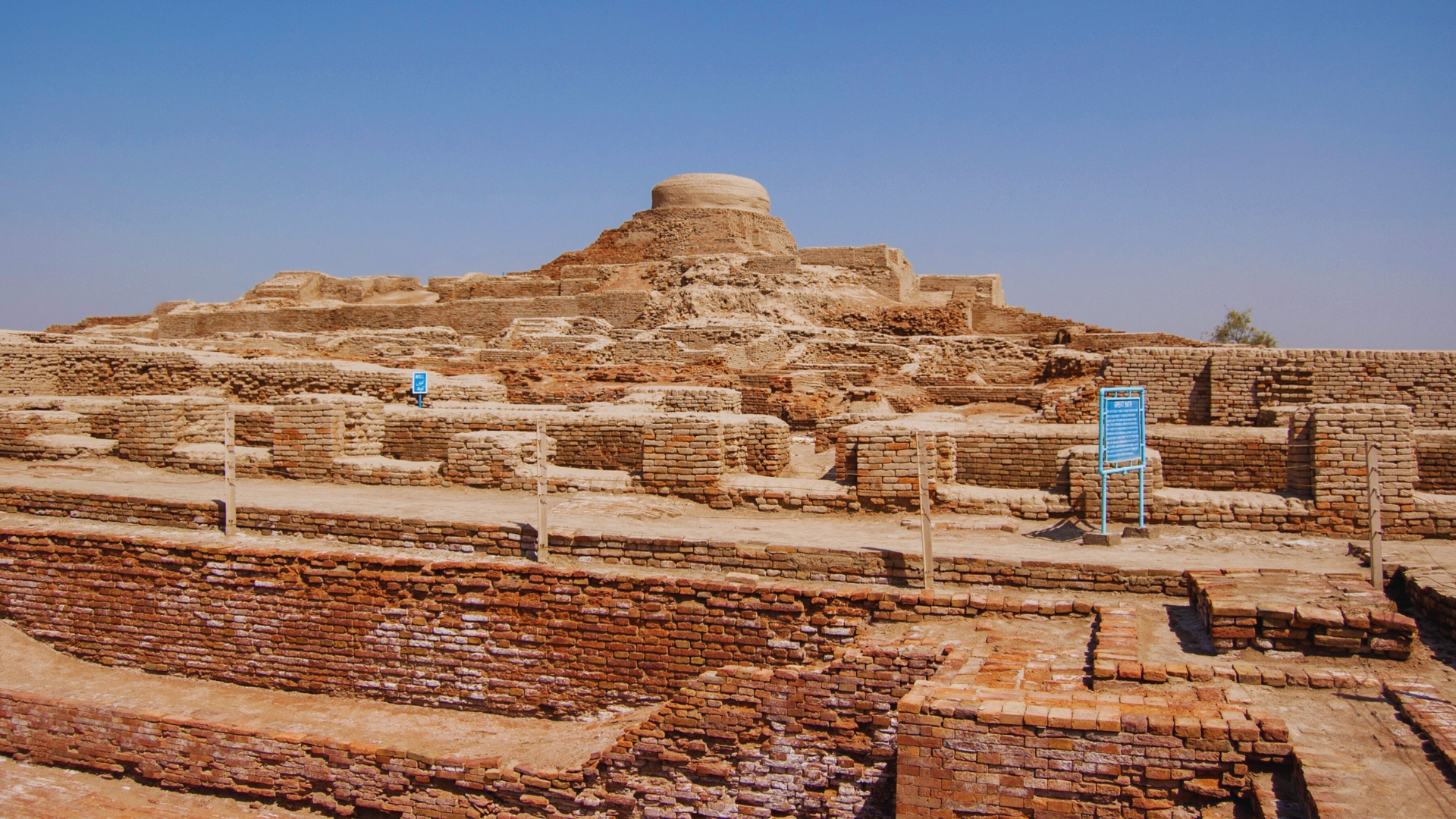
Remains of Indus Valley civilization at Mohenjo Daro, Pakistan. © Photo: Commoner28th / Getty Images
The Indus Valley Civilization, flourishing from 2600 BCE to 1900 BCE, remains one of the most fascinating and least understood ancient societies. Nestled in the river valleys of present-day Pakistan and northwest India, this civilisation is renowned for its urban planning, architecture, and mysterious disappearance.
One of the most striking features of the Indus Valley Civilization is its advanced urban design. Grid-pattern streets, sophisticated drainage systems, and well-built brick houses are specific characteristics of cities like Harappa and Mohenjo-Daro. This level of urban planning suggests a high degree of social organisation and engineering know-how.
Despite their advancements, the script of the Indus people, comprising around 400 symbols, still needs to be completed. This significant barrier prevents a deeper understanding of their societal structure, religious beliefs, and daily life. Unlike other contemporary civilisations, the absence of known monumental structures or tombs adds complexity.
Another intriguing aspect is the abrupt decline of this civilisation. Numerous theories, from climate change and natural disasters to invasions, have been proposed, but the exact cause remains a subject of intense scholarly debate.
The artistic expressions of the Indus people, primarily small figurines and seals, depict a range of animals and human figures. These artefacts provide a glimpse into the aesthetic sensibilities of a civilisation with no temples or palaces, hinting at a unique societal structure.
Echoes of the Orient: A Deep Dive into the Mysteries and Marvels of Ancient China

Excavated statues of the terracotta army, identified as warriors of Huang Emperor Qin Shi at Xian, Shaanxi Province, China. Photo: © Vadim Nefedov / Freepik
The civilization of ancient China, with its origins around 2100 BCE, stands as an exemplification of human inventiveness and artistic richness. This civilization, emerging along the Yellow and Yangtze Rivers, is known for its profound philosophies, innovations, and enduring mysteries.
One of the most remarkable aspects of ancient Chinese civilization is its long-standing dynastic rule. From the Shang to the Qing Dynasty, each era left its unique imprint, contributing to a rich tapestry of history. The Shang Dynasty, particularly noted for its bronze casting and oracle bones, provides the earliest evidence of Chinese writing, offering invaluable insights into early Chinese society.
The Great Wall of China, a colossal architectural feat, symbolizes the ancient Chinese ability to mobilize resources for massive projects. While commonly believed to be a single, continuous wall, it’s a series of fortifications built over centuries, reflecting the evolving military strategies of various dynasties.
Another aspect swathed in mystery is the Terracotta Army, discovered in the tomb of Emperor Qin Shi Huang. This vast collection of life-size terracotta sculptures depicting warriors, chariots, and horses raises questions about the emperor’s beliefs in the afterlife and the extent of his imperial power.
The philosophy and religion of ancient China, including Taoism and Confucianism, continue to influence modern thought. The teachings of Confucius, emphasizing morality, social harmony, and respect for hierarchy, played a crucial role in shaping Chinese societal structures.
Mysteries of the Mayan Culture: A Rich Tapestry of a Lost Civilization

The temple of Great Jaguar, Tikal National Park, Guatemala. Photo: © Irina Brester / Freepik
The Mayan civilization, a Mesoamerican culture that flourished from 2600 BCE to the 16th century, continues to capture the imagination with its profound mysteries and sophisticated achievements. Originating in what is now Guatemala, Belize, and parts of Mexico, Honduras, and El Salvador, the Maya developed a civilization known for its unique hieroglyphic script, architectural wonders, and advanced astronomical knowledge.
At the core of Mayan civilization was their intricate calendar system. The Long Count calendar, famous for the 2012 end-of-world misinterpretation, reflects their deep understanding of time and cosmic cycles. This calendar and their Tzolk’in and Haab cycles were integral to their religious ceremonies and daily life.
Mayan architecture also offers a window into their world. Sites like Tikal, Chichen Itza, and Palenque stand as testaments to their architectural prowess and urban planning. These cities, towering pyramids, grand plazas, and sophisticated palaces reveal a society with complex social and political structures.
The Maya also excelled in the arts and sciences. Their advancements in mathematics allowed them to develop a vigesimal (base-20) numerical system, including the concept of zero. In astronomy, they could predict solar and lunar eclipses, and their observations were crucial for agricultural planning.
However, many aspects of Mayan culture remain obscured. The sudden decline of their classic cities around the 9th century, often attributed to environmental degradation, warfare, or social upheaval, continues to be a subject of intense study and debate.
Exploring the Depths of Aboriginal Culture: Voices of First Traditions and Wisdom

A massive 550 million-year sandstone at Uluru is of the highest spiritual significance to the Anangu community in Northern Territory, Australia. Photo: © Francesco Riccardo Iacomino / Freepik
Aboriginal culture, belonging to the indigenous peoples of Australia, stands as one of the oldest continuous cultures on Earth, with a history that spans more than 50,000 years; this rich and diverse culture is deeply connected to their land and the spiritual beliefs that guide their way of life.
One of the most distinctive features of Aboriginal culture is their Dreamtime stories. These are more than just myths or legends; they are a vital part of the cultural and spiritual identity of Aboriginal people. These stories explain the universe’s origins, the land’s creation, and the behaviour of animals and humans. They are a crucial means of passing knowledge, cultural values, and the history of the land from one generation to the next.
Art is another significant aspect of Aboriginal culture. Traditional Aboriginal art, including rock paintings, body paintings, and ground designs, is an aesthetic expression and a way to convey stories and laws. The symbols used in their art are a visual language that holds deep spiritual significance.
The connection of Aboriginal people with the land is profound. Their knowledge of the environment passed down through generations includes understanding flora and fauna, weather patterns, and the land’s topography. This connection is intrinsic to their identity and way of life.
Despite their rich heritage, many aspects of Aboriginal culture and history still need to be better known. The impact of colonization and the subsequent loss of language and cultural practices have created gaps in understanding this ancient civilization.
The Spirit and Resilience of Native Americans
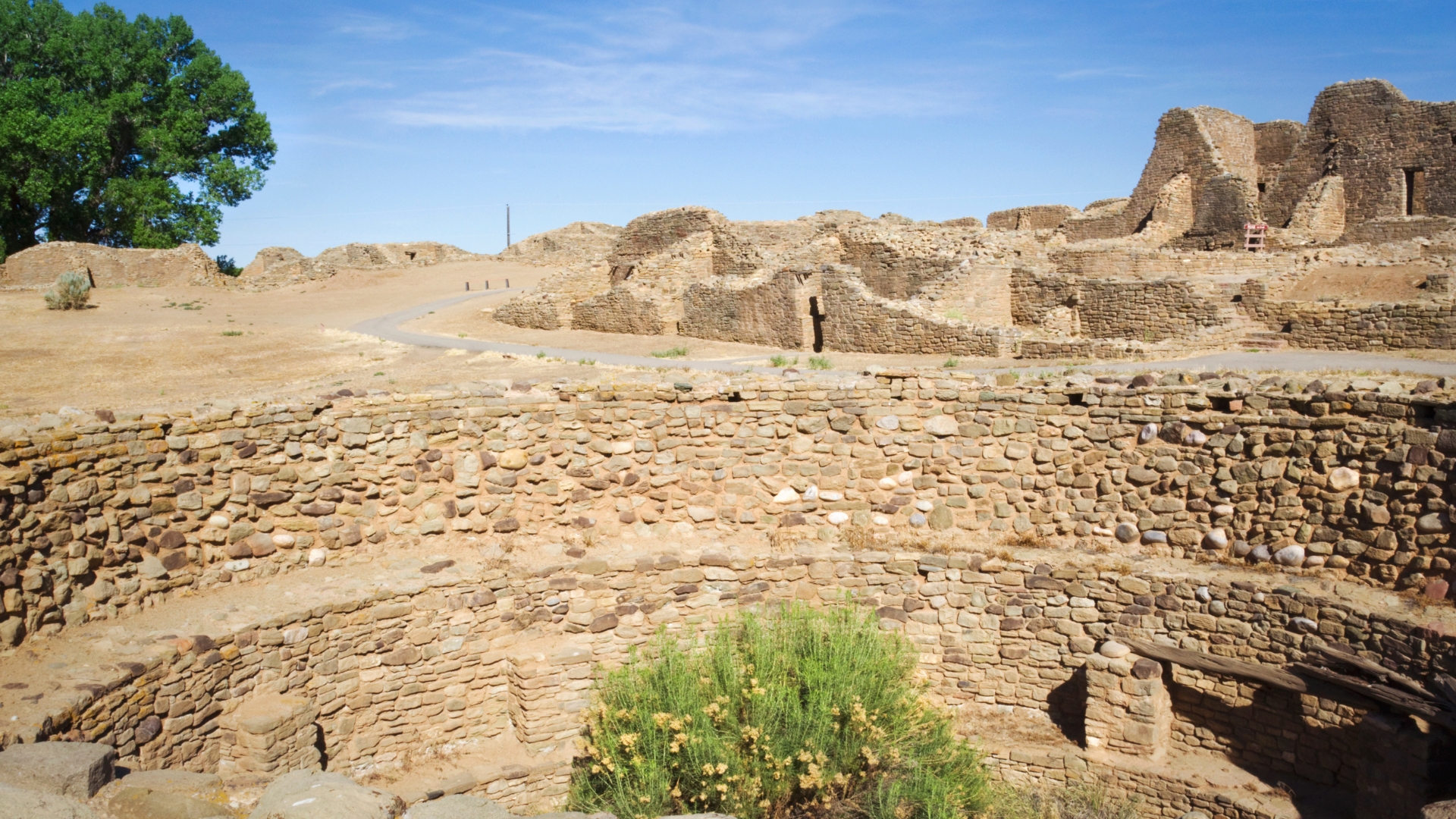
Settlements of Native Americans, New Mexico. Photo: © Powerofforever / Getty Images
Native American culture, encompassing a multitude of tribes across North America, presents a fascinating array of traditions, beliefs, and historical complexities. This diverse culture, dating back thousands of years, encompasses many languages, customs, and spiritual beliefs.
One of the most striking aspects of Native American culture is its deep spiritual connection with nature. Many tribes believe in a profound relationship with the earth, viewing it as a living entity that must be respected and protected. Through rituals, dances, and storytelling, they often express this spiritual connection, an integral part of their cultural heritage.
Another intriguing aspect of Native American culture is their rich oral tradition. Storytelling is not merely a form of entertainment; it’s a crucial method of preserving history, culture, and moral values. These stories often feature lessons about life, nature, and the universe, reflecting the tribe’s values and worldviews.
Native American art is another area that offers insight into this multifaceted culture. From intricate beadwork and pottery to elaborate feather headdresses, each piece holds symbolic meaning and reflects the unique artistic styles of different tribes.
However, the history of Native American tribes is marked by struggle and resilience. The appearance of Europeans brought deep adaptations, leading to displacement, cultural assimilation, and loss of traditional ways of life. Despite these challenges, Native American communities have worked tirelessly to preserve and revive their cultural heritage.
References:
- The Sumerians: Their History, Culture, and Character by Samuel Noah Kramer – offers a comprehensive overview of the Sumerian civilization, one of the earliest in Mesopotamia.
- Babylon: Mesopotamia and the Birth of Civilization by Paul Kriwaczek – blends archaeological findings with historical narratives to paint a vivid picture of Mesopotamia, its people, and its enduring impact on the world.
- The Oxford History of Ancient Egypt, edited by Ian Shaw – covers various aspects of Egyptian history, culture, art, architecture, and politics, making it an invaluable resource.
- The Indus Civilization: A Contemporary Perspective by Gregory L. Possehl – offers a comprehensive overview of the Indus Valley Civilization, discussing its discovery, archaeological sites, and the challenges in understanding this complex society.
- Ancient Cities of the Indus Valley Civilization by Jonathan Mark Kenoyer – presents a detailed analysis of the urban development and architectural innovations of the Indus Valley Civilization, backed by years of archaeological research.
- The Cambridge Illustrated History of China by Patricia Buckley Ebrey – offers a comprehensive visual and textual overview of Chinese history, from its ancient roots to modern times.
- The Maya by Michael D. Coe – provides a comprehensive overview of Mayan history, from the earliest villages to the decline of the Classic Maya civilization.
- The Biggest Estate on Earth: How Aborigines Made Australia by Bill Gammage – explores how Aboriginal people shaped the Australian landscape through land management practices.
- Empire of the Summer Moon by S.C. Gwynne – details the rise and fall of the Comanche tribe, offering a vivid portrayal of Native American history and culture.


